Earlier this year we had a chance to test the new Fujifilm X-T10 – a smaller, lighter and more importantly cheaper version of the X-T1 – so can you save some money and go with the cheaper model? here are our thoughts.
Last year we tested the X-T1. This was (and still is actually) one of the most watched reviews that we ever published on the site (with over 50k views on Youtube). Now Fujifilm has a new member of the X family and we had a chance to play with it for almost a month along-side two high-end lenses – the new XF16-55mm F2.8 R LM WR and the XF56mm F1.2 R APD (reviews on both – coming soon).
The X-T10 with the XF16-55mm F2.8 R LM WR and the XF56mm F1.2 R APD
Before we start here is a quick reminder of the specs of the X-T10 (from our original post on the camera which included a review of the prototype of the X-T10 by the great guys from the Camera Store (which you can check out here).
- Sensor: 16.3 MP APS-C X-Trans CMOS II Sensor (similar to the X-T1).
- Processor: EXR Processor II (similar to the X-T1).
- Viewfinder: 0.39″ 2,360k-Dot 0.62x OLED Viewfinder (smaller and not as capable as the huge 0.77x magnification of the X-T1).
- LCD – 3.0″ 920k-dot tilting.
- Video: Full HD 1080p Video Recording at up to 60 fps.
- Connectivity: Built-In Wi-Fi Connectivity (like the X-T1).
- AF: Intelligent Hybrid AF with 77 Areas (there are some improved AF options).
- Continuous shooting: Up to 8 fps Shooting (like the X-T1 possibly with smaller buffer).
- Flash: Built-In Pop-Up Flash (unlike the X-T1 which requires an external unit).
- Price: $800 – body only on Amazon (about $400 less than the X-T1 and $900 with the 16-50mm lens kit).
The video above is long so here is a table of contents to help you navigate around:
- 0-0:30 – Intro.
- 0:31 – 04:26 – size issue
- 04:27 -13:37 – built and design.
- 13:38-19:54 – performance.
- 19:55-26:14 – conclusion.
Construction, ergonomics and operation
If you ever tried the X-T1 than the X-T10 will look very familiar to you. The two cameras look like sisters with the X-T10 being about 70 grams lighter and almost 1 cm shorter.
Talking about the hight of the camera – the first thing that we noticed when we connected the two lenses we received with it for review (the XF16-55mm F2.8 R LM WR and the XF56mm F1.2 R APD) was the very surprising fact that the camera was too short. This is not the first time that we see this issue. Some of the Samsung NX cameras has this issue as well.
The general build quality of the camera is superb – just like the X-T1 – very high quality and very good use of materials with some metal parts. The only thing which felt a bit out of place in terms of quality was the dials (there are two made from plastic – front and back). These are pressable which is nice, but they feel cheaper than what we are used to in DSLRs or even some other high end mirrorless cameras. The camera does have some great top dials for changing exposure compensation – which is cool, and a second dial for changing the shutter (which negates the PSAM dial which does not exist on this camera – sadly). A new addition is the Auto mode selector lever – which does not exist on the X-T1 and basically makes the camera shoot in auto if you don’t want to mess too much with the settings or don’t know how to (this is a stark change from the X-T1 which we would categorize as a camera for people who know a thing or two about photography and are willing to spend time configuring it). We have to confess that we didn’t test the auto mode too much and most of this review was done on the normal mode.
On the top left you also have the drive dial as well as a tiny flash – which is not super useful (being very small) but is nice to have (the X-T1 has no built in flash).
The rest of the camera is pretty standard, the grip is pretty comfortable, you have a forward dial for changing the AF mode (manual, single and continuous), a tilt LCD in the back and a pretty large EVF (we shall talk about both later on), as well as a quick menu bottom which we like and a single Fn bottom (on the X-T1 you have another one in the front).
Performance
Generally the performance of the X-T10 was very good but there ware a few exceptions:
Battery life – we were very impressed by the battery life. The official number from Fujifilm states only 350 images between charges. We got closer to 500 (!). This is a very high number for a mirrorless camera (DSLRs still lead by a big margin here with close to 1000 images at this price level).
Continuous shooting speed and buffer – Both the X-T1 and the X-T10 shoots up to 8 fps however the X-T1 has a pretty impressive buffer of 23 RAW+JPEG images while the X-T10 in our test has less than half (in both cases we used a 64GB UHS II Sandisk card – currently the fastest on the market). If speed is your thing than the X-T1 has a big advantage here but to be honest – both cameras are far from perfect for sports photography due to their AF systems.
Sensitivity – Just like the X-T1 and other X-Trans based cameras from Fujifilm, the sensitivity of the X-10 is great and almost on a class of its own in terms of APS-C cameras.
Lets look at some side by side images next to the D7100 – both shot at around 50mm, f/8, the Nikon was reduced in size to match the Fujifilm X-T10 16MP resolution.
Lets start with both cameras at ISO200
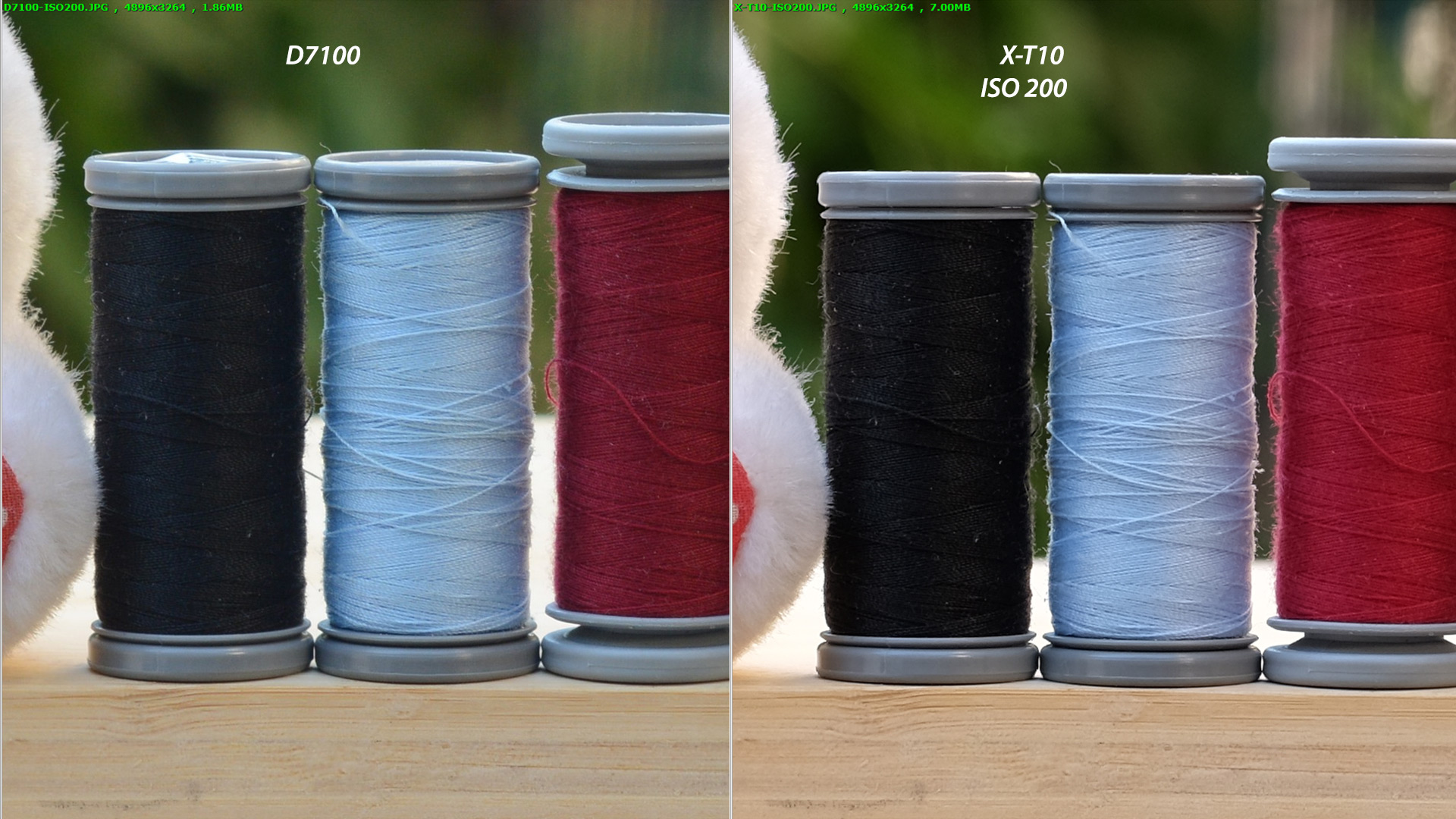 Both cameras looks good – we prefer the Nikon darks – much more details. Colors in general are pretty different – look at the reds.
Both cameras looks good – we prefer the Nikon darks – much more details. Colors in general are pretty different – look at the reds.
Lets move to IS0800
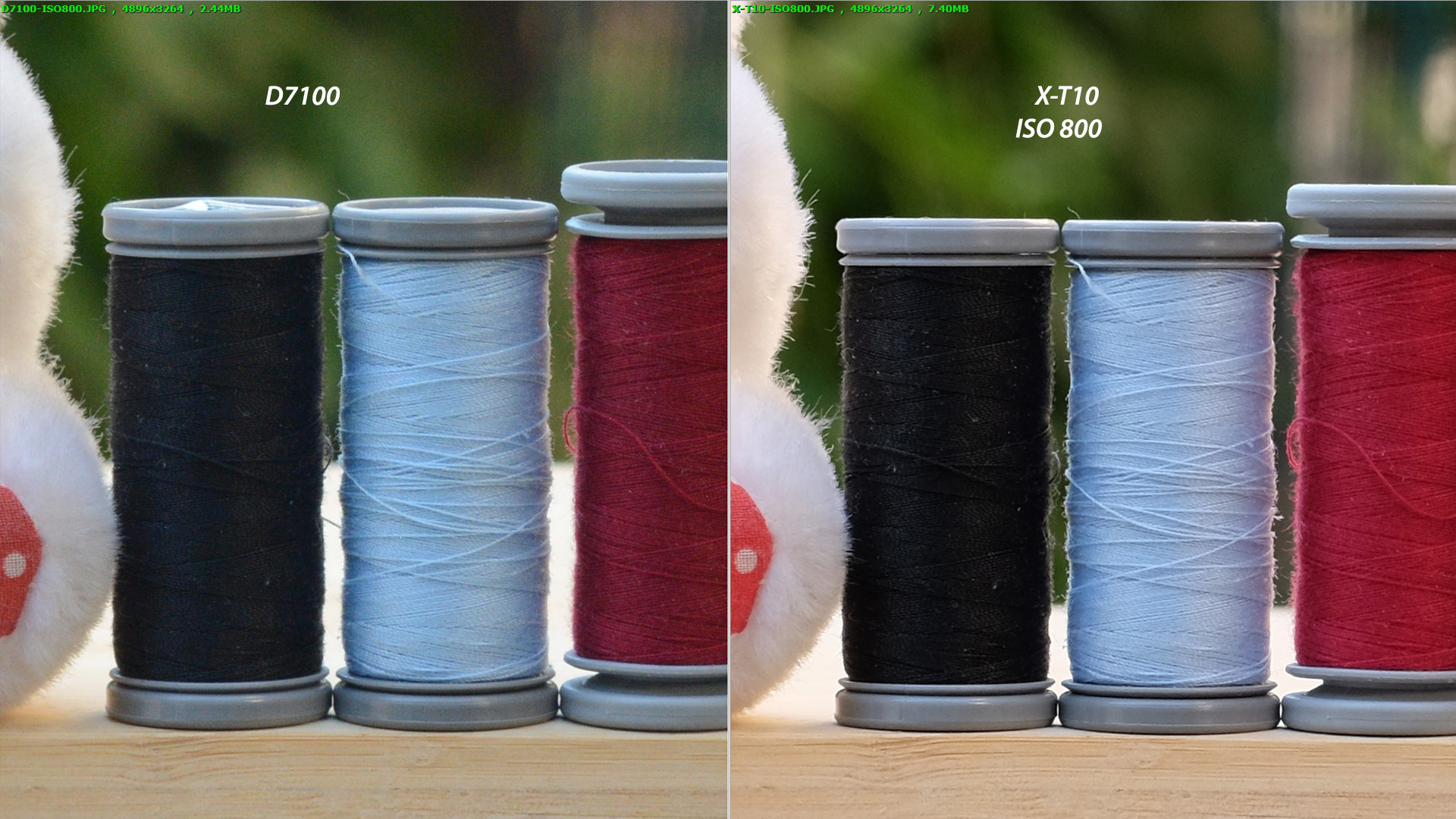 Minor grain on the Nikon (still acceptable) and very minor noise on the X-T10
Minor grain on the Nikon (still acceptable) and very minor noise on the X-T10
Getting more interesting – ISO1600
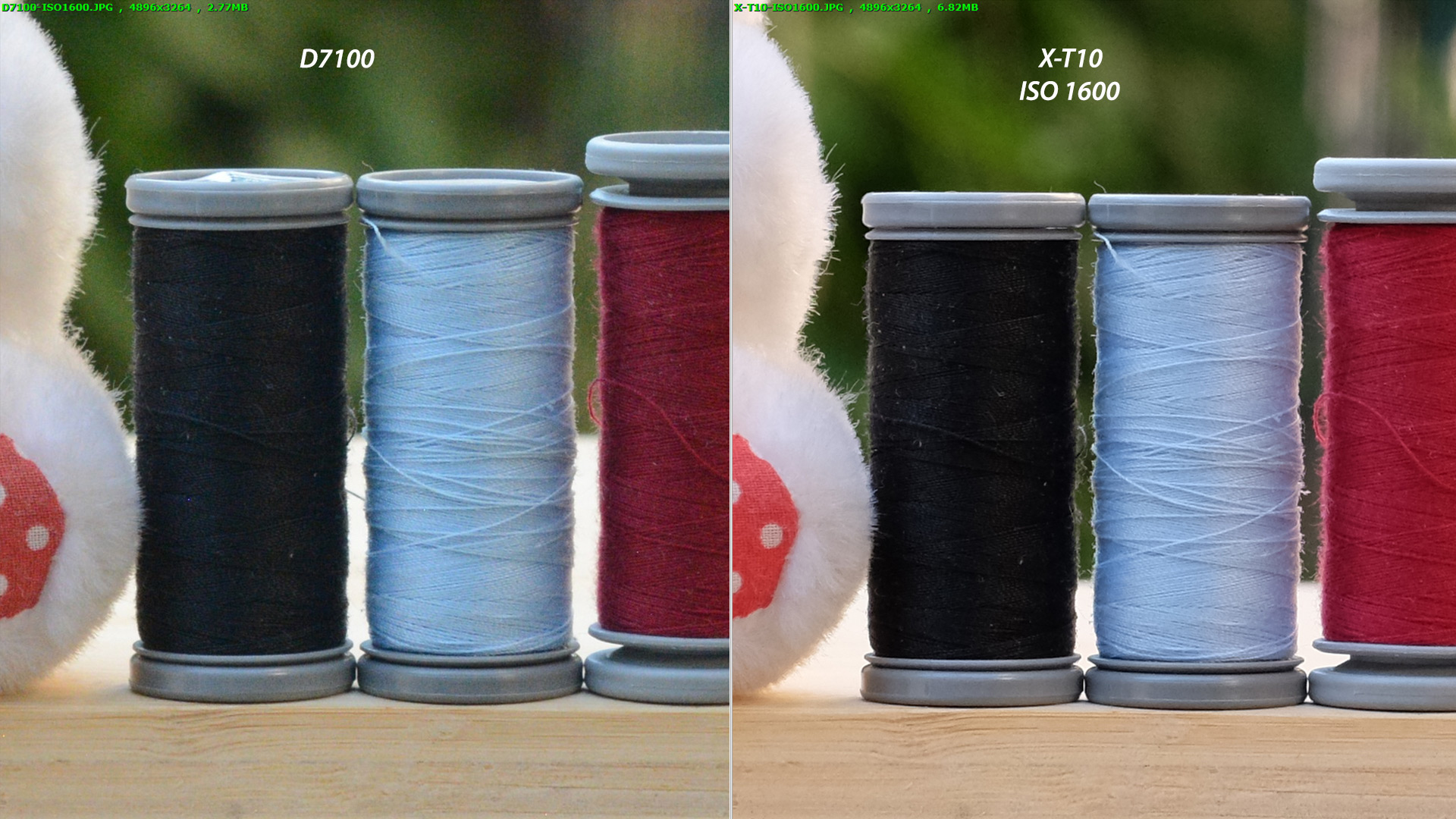 Here we start seeing lots more noise on the D7100, the X-T10 still holding firm with good noise levels and decent details.
Here we start seeing lots more noise on the D7100, the X-T10 still holding firm with good noise levels and decent details.
Lets push it to ISO3200
 The Nikon looks bad (not acceptable in our opinion), noise, lost of colors, artifices of all types and reduced details. X-T10 still looking very good.
The Nikon looks bad (not acceptable in our opinion), noise, lost of colors, artifices of all types and reduced details. X-T10 still looking very good.
Finally – ISO6400
 As you can see – the Nikon is completely unusable – on the X-T10 there are some reduced details and noise but basically still acceptable in our eyes.
As you can see – the Nikon is completely unusable – on the X-T10 there are some reduced details and noise but basically still acceptable in our eyes.
As you can see above – the ageing D7100 can’t compete with the X-T10 (or the X-T1 for that matter as we have seen in the past). The New D5500/D7200 should be closer to the Fujifilm – and we will have a review on both – soon.
We would like to mention that in one aspect the sensor on the X-T10 is showing the signs of ageing itself – and that is resolution. In a world ware everybody has 20MP+ resolution on APS-C (now closer to 24MP), having a 16MP might help you with sensitivity but for details – we would prefer the higher resolution – which we believe is coming later this year or early in 2016 on the new line of Fujifilm’s cameras (starting probably with the X-PRO2).
EVF, LCD & Autofocus (and exposure) – The LCD of the X-T10 seems to us to be very similar to the tilting display of the X-T1. It is O.K. but we wish Fuji would move to a touch screen already – in these types of cameras it can be very helpful.
The EVF on the X-T1 is possibly the best we ever tested (surely the largest) with some amazing capabilities (read our review of the camera for more on that). The X-T10 EVF has the same resolution but is smaller and lacks the same advanced split view capabilities (and possibly a few others). Still, it is a very good viewfinder and we had no major issues with it (we also love the center position – unlike so many other manufacturers who prefer the side position – including Fuji itself on the X-PRO and X-E lines).
The back of the X-T10
Moving to AF – this was always the weak point of Fuji cameras. We had a chance to test the X-PRO1 when it was just announced (first firmware) and it was horrible (unusable) since than Fuji improved it considerably and the X-T1 was the first Fuji camera with AF (based on initial firmware) that was at least O.K.. Since than the X-T1 got some firmware updates and the X-T10 is now on the same level (supposedly) that the X-T1 is with the latest firmware. If you are not shooting fast moving subjects – you should be O.K. (depending on the lens you use of course). If you love shooting sports, birds etc. find a different camera (wither a mid-high level DSLR or at the very least something like the Sony A6000 with a fast AF lens). Talking about lenses – the Fujifilm 56mm f/1.2 APD which we tested had some very serious AF issues in low light (this is a known drawback due to the APD filter, but we will talk about that on the lens review which is coming soon). With the 16-55mm f/2.8 our focusing speed was decent even in low light (although not fast by any means).
Missed focus at a wedding with the 56mm F/f.12 APD lens – we had a lot of those…
 We to want to add a word about exposure (or rather auto exposure). On a few occasions the camera seems to miss the correct exposure completely. This happened typically in complex scenes with wide dynamic range, but still this should not happen and we didn’t see this in almost any other camera so far (maybe on a Samsung camera once). This should be fixable in a firmware update we believe and hope that Fuji will take this into consideration.
We to want to add a word about exposure (or rather auto exposure). On a few occasions the camera seems to miss the correct exposure completely. This happened typically in complex scenes with wide dynamic range, but still this should not happen and we didn’t see this in almost any other camera so far (maybe on a Samsung camera once). This should be fixable in a firmware update we believe and hope that Fuji will take this into consideration.
Exposure problems – should be solvable with a firmware update
Video is not the strong side of Fujifilm cameras – never was (which is interesting as Fuji is very well known for producing some of the best glass for professional video and broadcasting). Basically the video is very similar to what you can find on the X-T1 – i.e. 1080p at max 60p. The quality is O.K. for occasional video but not impressive (you can be the judge – look below).
Test video with the X-T10 and the 56mm f/1.2 APD
[youtube]https://youtu.be/wq2A0ZmqFbM[/youtube]
AF in video mode was also far behind the best cameras around including some of the latest Canon, Panasonic and even Sony models. Also keep in mind that just like the X-T1 – you have no headphone jack and the mic jack is a strange 2.5mm non standard one (and the camera internal mic catches a lot of wind noise – just like almost any other internal mic).
Conclusion
So at the end of the day – what do we think about the X-T10. Well, as we noted more than once in the video, the X-T10 is indeed the smaller, lighter, cheaper version of the X-T1. It has a lot going for it – great sensor (with very good sensitivity although we feel the 16MP resolution is due for an upgrade), very good build quality, high quality viewfinder (although not the amazing one found on the X-T1), very good battery life for a mirrorless camera and the same retro design that so many Fujifilm lovers enjoy.
The X-T10 does have some drawbacks (just like any camera). The biggest one in our opinion, and one which we have no idea how the engineers over on Fujifilm missed, is the fact that it is basically incompatible physically with Fujifilm premium XF lenses (at least the 2 that we tested and probably a few others). The camera is too short and the lenses touch the ground and if placed on tripod with a long plate you can’t change the zoom (on the 16-55mm f/2.8) or the focus (on the 56mm f/1.2). This is solvable if Fuji will release a mini grip to make the camera taller – which we hope it will (but it is really up to the company).
X-T10 – a solid performer with a few issues
Other than that we saw some exposure issues (not many but it did happen), AF is still not on the level of other mirrorless cameras (such as the great Sony A6000 nor modern DSLRs for that matter). Finally, the video is mediocre at best with an annoying non standard 2.5mm mic jack and no headphone jack (just like the X-T1).
So to conclude – if Fujifilm will fix that camera hight issue (with a grip) and after a firmware update that will fix the exposure and maybe improve the AF a little bit more – we will be able to crown the X-T10 as a worthy replacement to the X-T1 for those who can’t afford the larger, more expensive older sister.
What we liked
- Very good image quality (even at high ISO, similar to the X-T1).
- Good build quality.
- Lots of manual and personal options to configure the camera.
- Large viewfinder with advanced focus peeking options.
- Fair price for what you get (currently $800 vs. $1150 for the X-T1).
What we didn’t like
- Too small for some XF lenses.
- AF is still not on the level of some other mirrorless cameras.
- Occasional exposure issues.
- Limited video options and non standard 2.5mm mic connection.
Update: some of our readers noted that Fuji already released a grip for the X-T10 which is a very welcome addition. Other users also mentioned that some XF lenses do apparently work well without the grip – so simply check before you buy the camera if you need it with the lenses you buy/have (the grip itself is pretty expensive).
Image gallery shot with the X-T10 & 56mm f/1.2 APD and 16-55mm f/2.8 lenses – click to enlarge





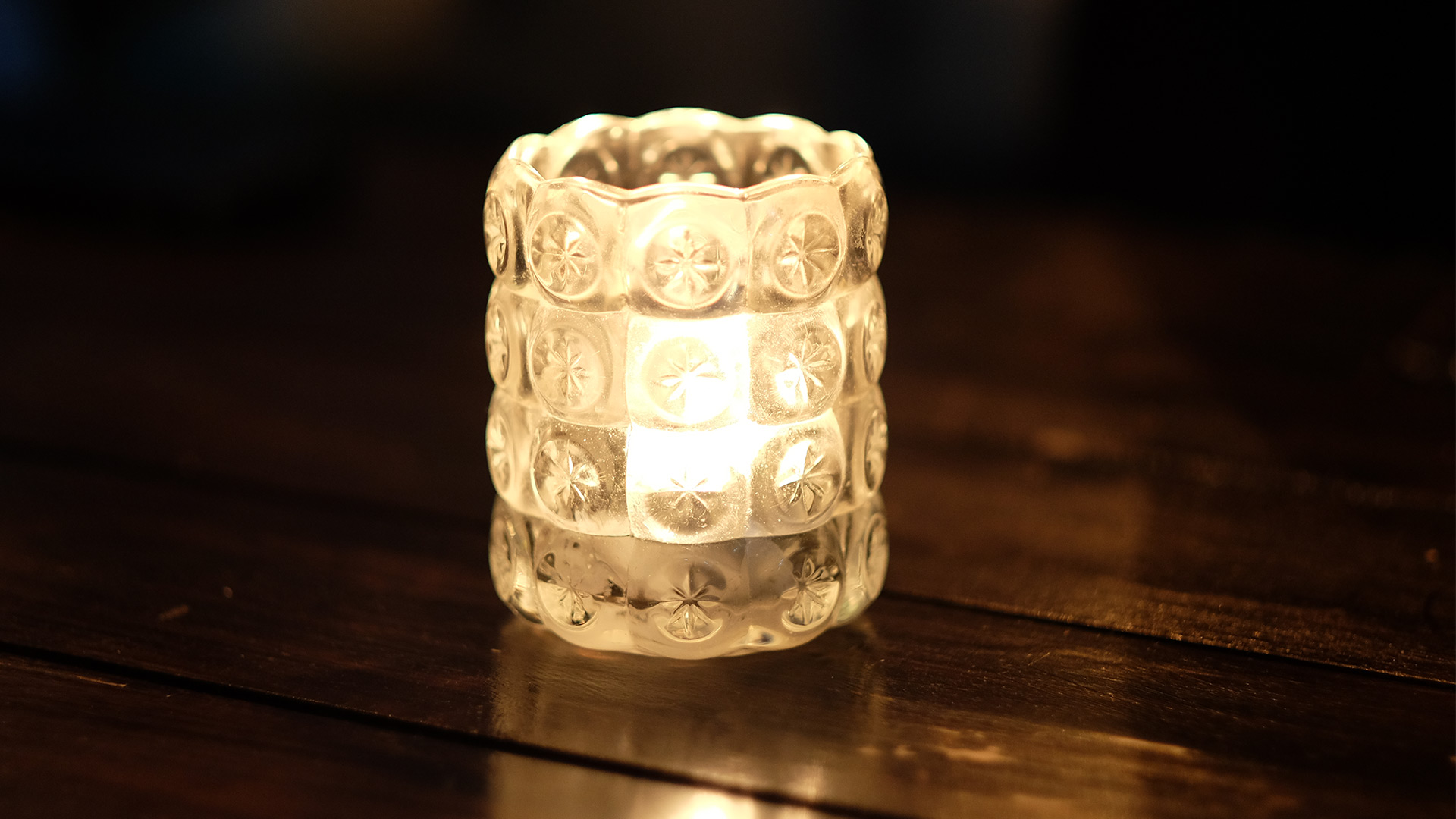

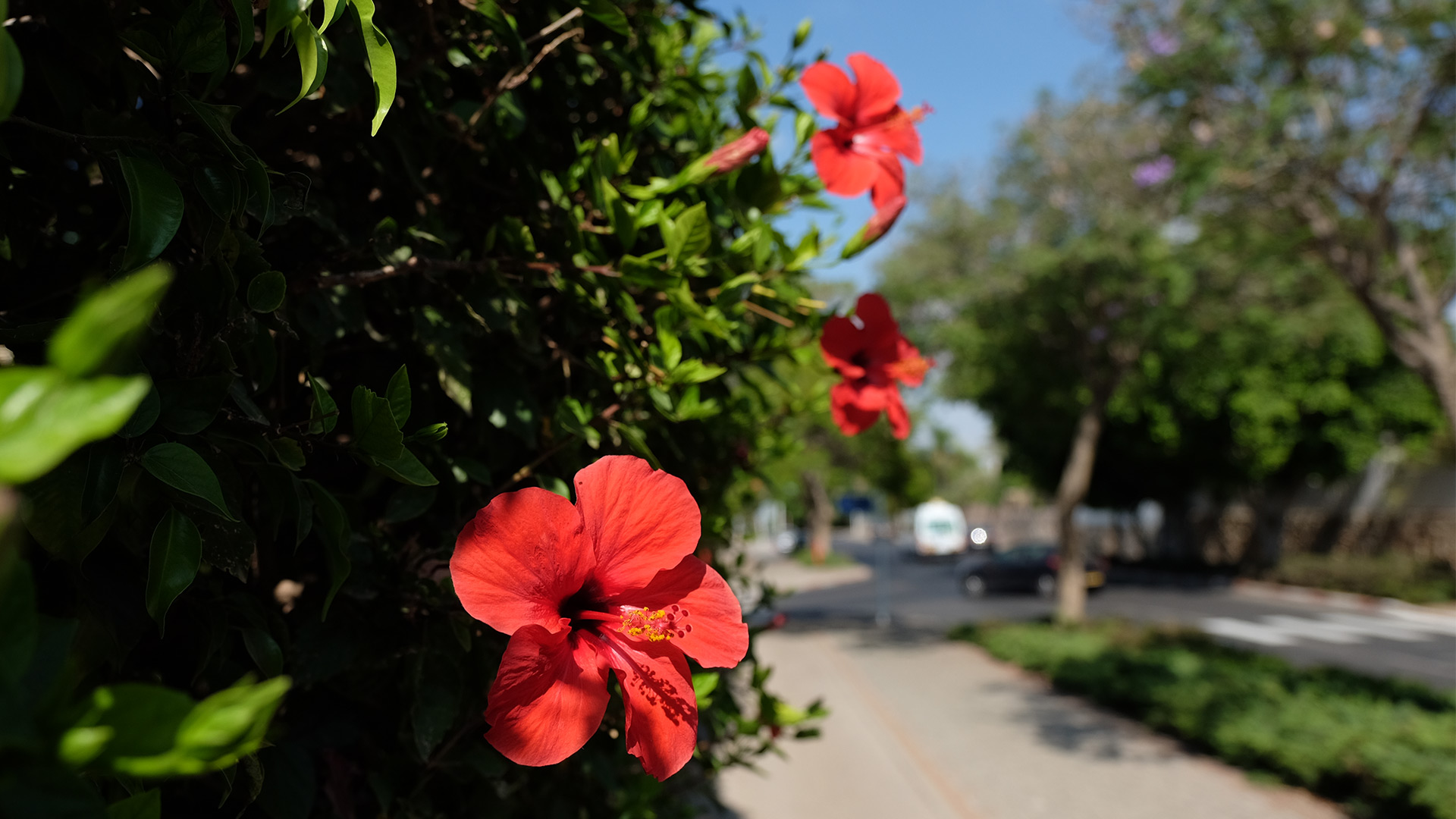

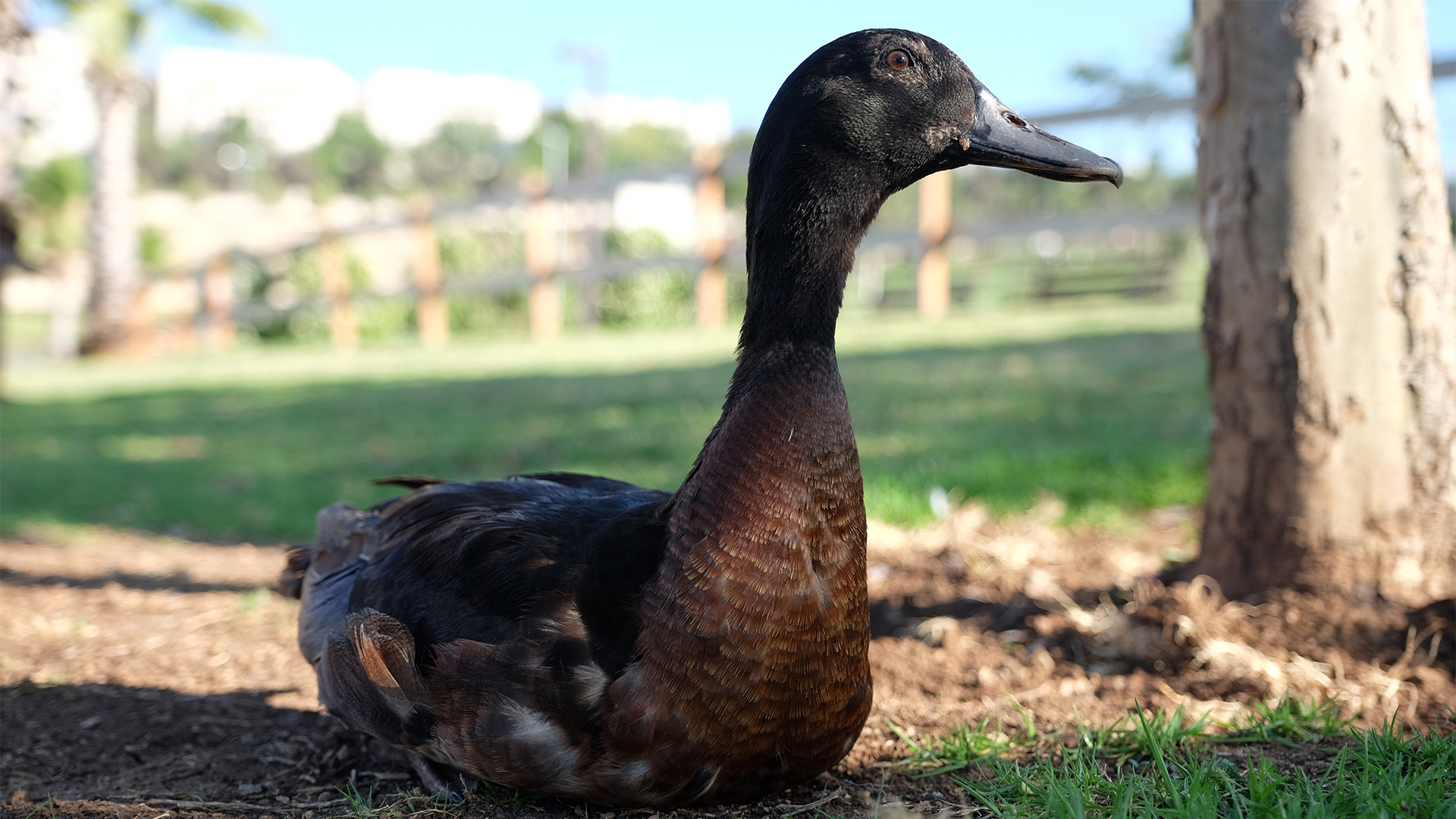
 We would like to thank Shimoni group for landing us the camera for review. You can check out more LensVid exclusive articles and reviews on the following link.
We would like to thank Shimoni group for landing us the camera for review. You can check out more LensVid exclusive articles and reviews on the following link.

You can support LensVid by shopping with our affiliate partners
Affiliates: Amazon, B&H, Adorama and E-bay.
Why should you trust us?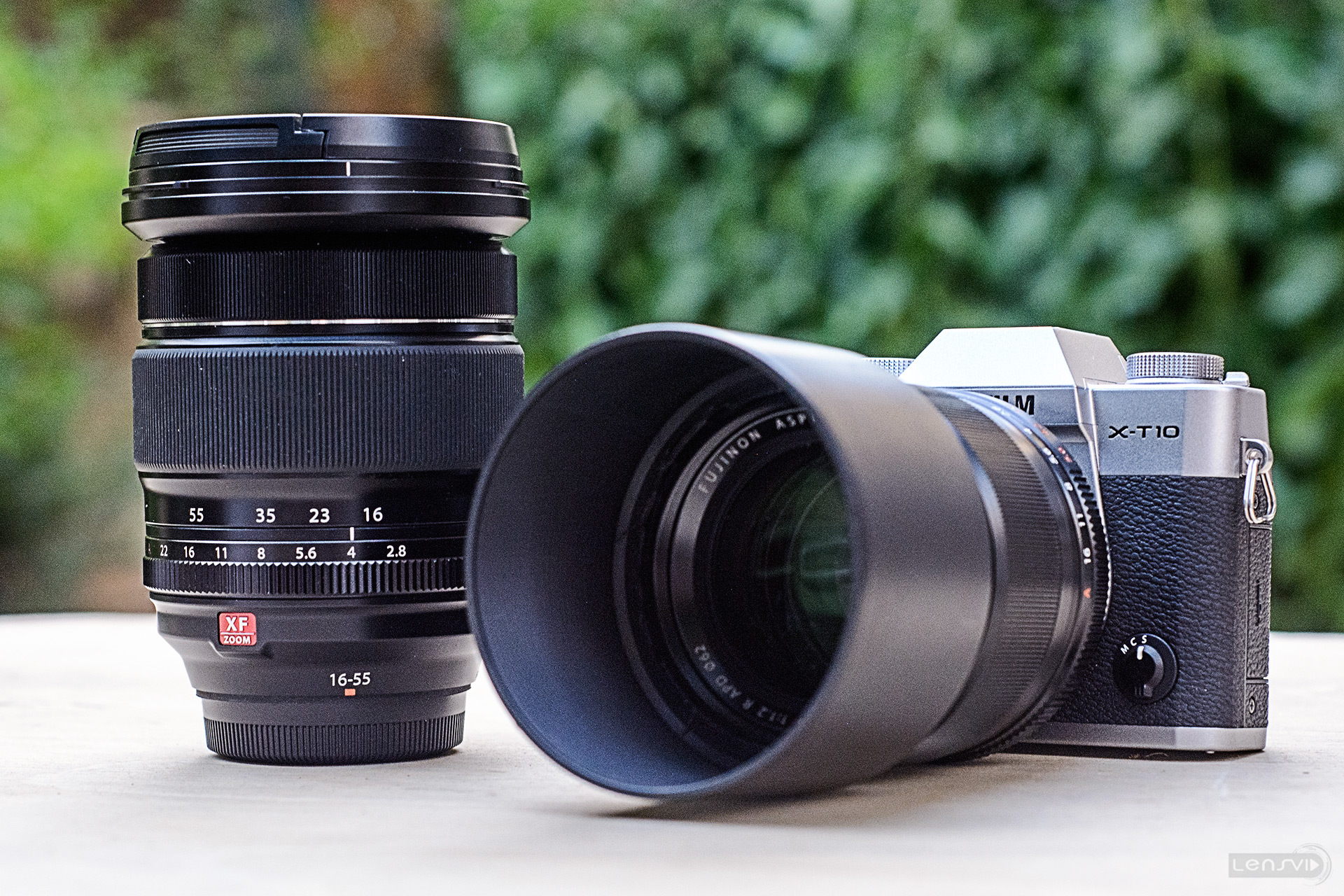


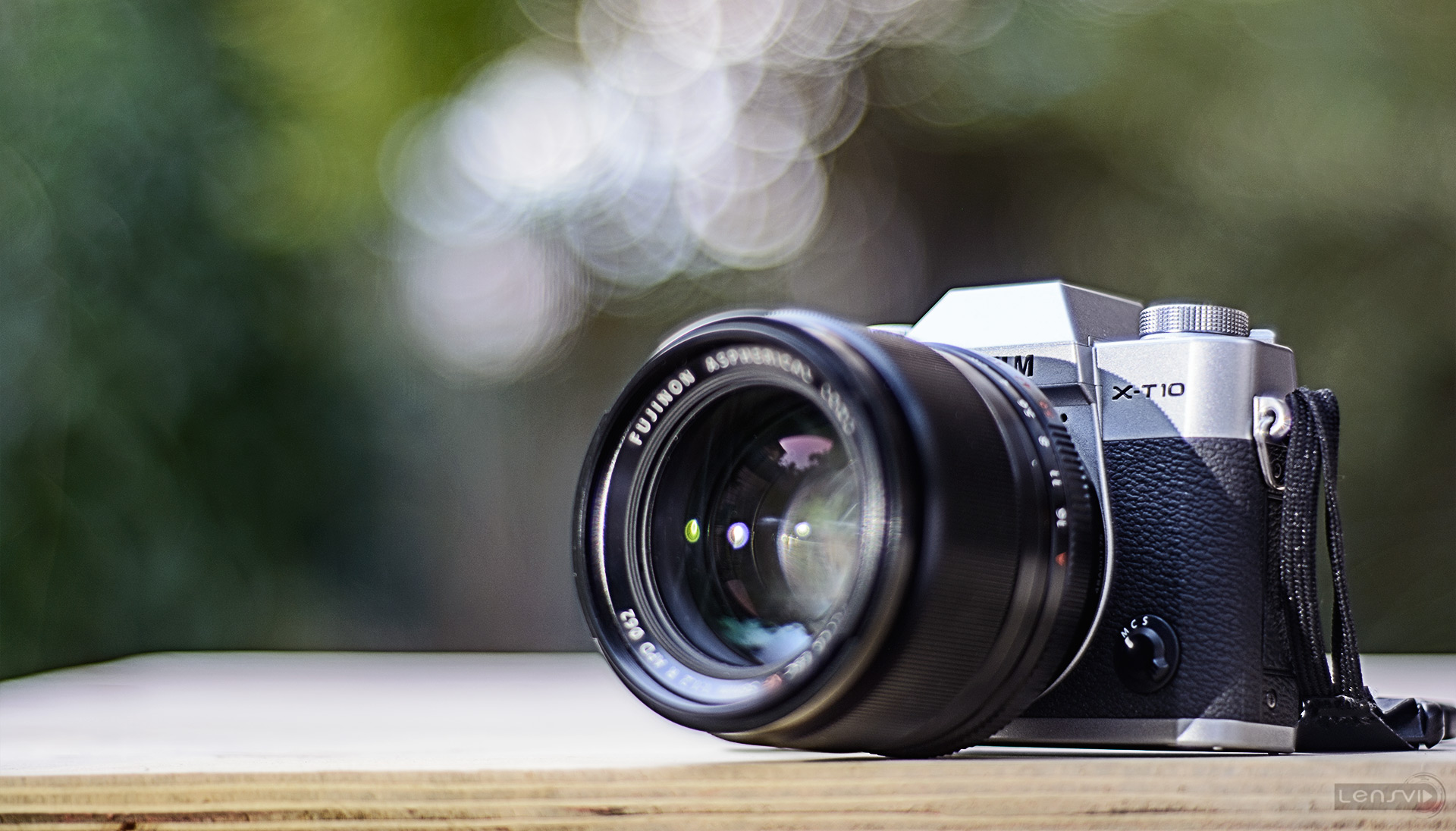
4 comments